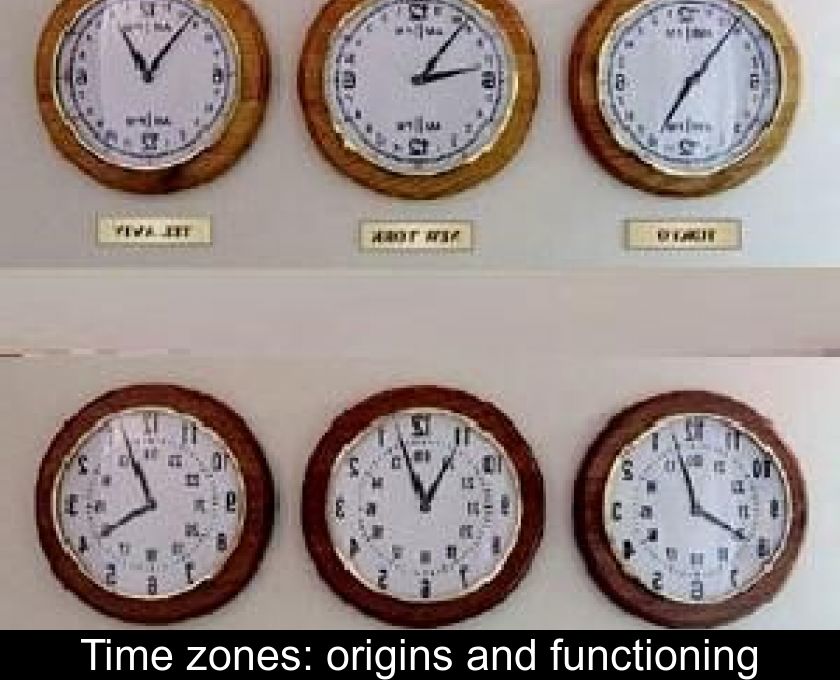Time Zones: Origins And Functioning
The time zones allow to calculate the time in the whole world by taking for origin the meridian of Greenwich. Here is the history of this system which was invented in 1876 and which knows today many exceptions.
Presentation
The time zones divide the earth's surface into several zones within which the time is basically the same in all places.
When changing from one time zone to another, the time increases or decreases by one hour.
Each zone covered by a time zone is bounded by two meridians 15° apart and extends from North Pole to the South Pole.
The first spindle or zero spindle is centered on the Greenwich meridian near London.
It is from this point that time is determined worldwide, called the origin time or Greenwitch Mean Time (for Greenwitch Mean Time).
Moving eastward, we advance one hour per time zone from Greenwich Mean Time.
Conversely, going westward is one hour behind Greenwich Mean Time per time zone.
Origins of time zones
Charles F. Dowd was the first to propose a standard system of time zones for U.S. railroads around 1863, but Dowd's system was not adopted by American railroads.
The system we know today was devised by Canadian engineer and geographer Sandford Fleming in 1876 to streamline train traffic around the world.
He proposed dividing the globe into 24 equally sized time zones, chose the Greenwich meridian as the origin of time, and set the date change line at the 180° meridian (east and west).
A short history of time in France
Until 1891, each city in France had its own time calculated in relation to the position of the sun: it was solar time also called 'true time'.
The times were therefore different in different places as there can be up to 50 minutes difference between sunrise in Strasbourg and sunrise in Brest.
Nevertheless, this system started to cause problems when the railroads developed.
This is why the authorities decided to adopt a uniform time throughout France in 1891: this is the legal time, given by all clocks.
France adopted the time zone system on March 9, 1914.
In 1978, the switch to daylight saving time (2 hours ahead of legal time) was introduced to save energy.
Time in the world
As a general rule, states define legal time on their territory by a fixed offset from Coordinated Universal Time (UTC).
Some countries, however, such as China and India, deviate from universal time: although their territory covers several time zones, they have decided to adopt a single legal time.
Other large countries (Australia, Brazil, Canada, DR Congo, USA, Indonesia, Russia) are arbitrarily divided into several zones to avoid too great a difference between legal time and solar time.
In addition, due to the summer/winter time system, the legal time in some countries may be significantly out of sync with the time in the corresponding zone for several months of the year.
As far as metropolitan France is concerned, it is on Central European Time and therefore one hour ahead of the time zone that would normally be intended for it.
You will find on the site below a map showing the time in different cities around the world.











